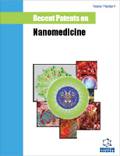Abstract
Gliomas amount to about 45% of all primary CNS tumors and 77% of all are malignant primary CNS tumors. They develop from diverse histological lineages, including oligodendrogliomas, astrocytoma and mixed oligoastrocytoma. The efficacy of current multimodal therapeutic strategies in gliomas is limited by the lack of specific therapies against malignant cells, and the prognosis in patients affected by primary brain tumors is still very unfavorable. Glial tumors seem to be able to create a favorable environment for the invasion of neoplastic cells when they combine with the extracellular matrix via cell surface receptors. The major problem in brain drug delivery is the presence of the blood brain barrier which limits the delivery of many chemotherapeutic agents and other kinds of therapeutic molecules. This event often contributes to the failure of treatment. Nanoparticle systems can represent ideal devices for delivery of specific compounds to brain tumors across the blood brain barrier. In this review we will focus on the blood brain barrier role and possibilities of its therapeutic overcoming, on mechanisms of angiogenesis into gliomas, their importance into tumor progression and the possibilities to block these mechanisms with new nanoparticle-based therapeutic strategies. Relevant patents of nanoparticle systems used as drug delivery carriers in brain tumor treatment are also reported.
Keywords: Blood-Brain Barrier, drug delivery, gliomas, glioblastoma multiforme, nanomedicine, nanoparticles.
 39
39

